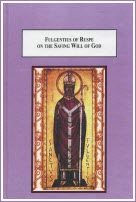Hippolytus was a presbyter in the church at Rome about 200 AD. It is he who started the genre of literature we know as biblical commentaries, being the first to write a running commentary on one book of the Bible. The book he chose was the prophet Daniel. Hippolytus’ church was suffering under the persecution of the emperor Septimus Severus, and as a pastor he used the examples of Daniel, Susanna, and the three youths to encourage his congregation to endure the persecution.
There is a new book out by W. Brian Shelton entitled Martyrdom from Exegesis in Hippolytus: An Early Church Presbyter’s Commentary on Daniel. It’s put out by Paternoster Press in their series “Studies in Christian History and Thought.” Since Hippolytus’ commentary is still in Greek and unavailable in English translation, Shelton’s book is the best means of ascertaining the contents of the commentary (unless you read patristic Greek).
I recommend the book for those interested in the subject of persecution and martyrdom in early Christianity, early Christian eschatology, patristic biblical commentaries, or the book of Daniel. It contains some interesting information. For example, Hippolytus’ Daniel commentary tells about a Christian leader in his day who prophesied that the Lord was coming soon, and consequently led his congregation out to the desert to wait for Jesus. People quit their jobs and went along. But when the leader’s prophecy did not come true, they were all humiliated, and returned to their former lives. Hippolytus says that Christians in persecution cannot always expect the Lord to intervene by His coming; it is God’s will for some to endure martyrdom.
Martyrdom from Exegesis is available for purchase from the publisher and Amazon.com.
For a full review of Martyrdom from Exegesis in Hippolytus, refer to the Book Review page.
